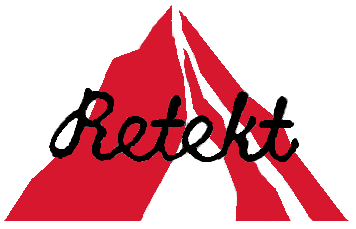
.jpg)
Most rock climbing holds in the united states are made from polyurethane. Polyurethane is a stong thermoplastic with applications ranging from wood varnish to furniture.
Holds are made by pouring a liquid polyurethane into a foam or concrete mold. When the hold is removed from the mold, its surface mirrors the surface of the mold. the surface finish wears off over time. Chalk covered hands and rubber soles smoothe the hold's surface over time. Holds become polished and no longer resemble the texture of a rock.
There is currently no commertial method of restoring a surface of a rock climbing hold to extend its life. The holds have no structural failiure, only a loss of surface roughness. Climbing gyms have no use for worn out holds and most gyms discard or recycle them. However, old and worn out holds are usually discarded to landfills. Most holds are not recyclable.
Climbing gyms spend thousands of dollars each year to purchase new climbing holds. If the team creates an effective way to resurface and restore grip to holds, the potential implications include:
Saving climbing gyms thousands of dollars
Prevent thousands of tons of plastic from going to landfills each year
The team is developing a way to make resurfacing climbing holds possible. To date, the team has tested many potential solutions.
Material removal was intially considered. Some of these removal methods include high pressure water blasting, sandblasting, and pitting with a hot metal tip (almost like a 3D printer nozzle with no filiment). With the exception of sandblasting, these methods were out of the teams ability to test. The team tried sandblasting hold. Unfortunately, the surface was polished rather than roughed. Material removal was ruled out and we have moved on to additive manufacturing methods.
Additive manufacuring in this application means creating a mixture that will adhere to the surface of climbing holds and renew the texture of worn holds. An adhesive is responsible for bonding to the holds surface. Agregates mixed with the adhesive are what create desirable friction on the hold's surface.
We have spent weeeks of our time researching and testing adhesives and agregates. To date, the adhesives we have tested include: rubber cement, liquid nails, two part castable resin, two part rubber resin, ready mix cement patch, and acrylic paint. The team has tested various agregates that include several sand grits and copper slag media,
The team has created mixture that creates a desirable textue. The problem with the teams current mixture is it lacks the durability. The resurfaced holds only lasted about a week when on the climbing wall. The team is trying to strengthen the mixture so that it will last much longer.
Date Last Updated: 5/8/2018